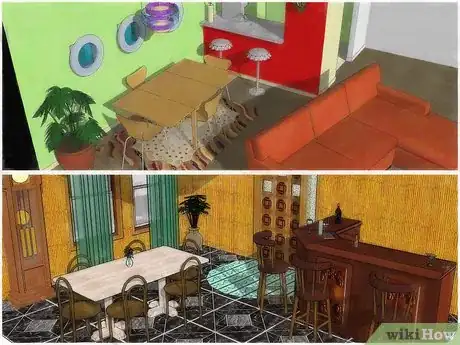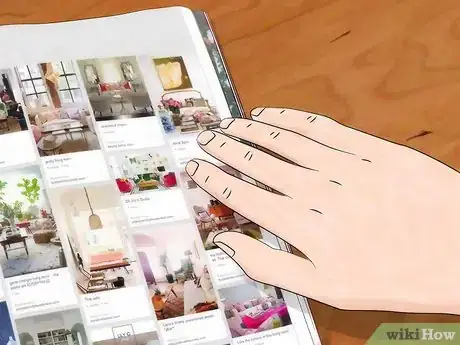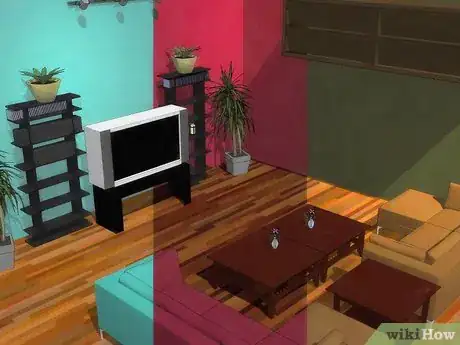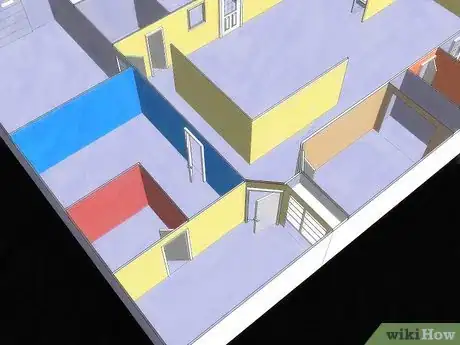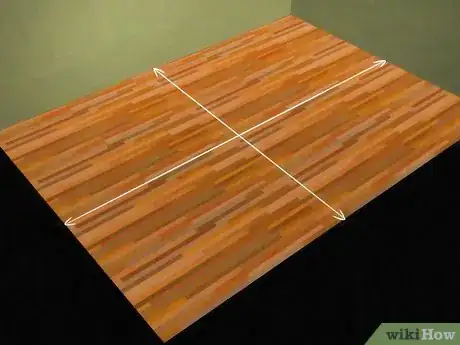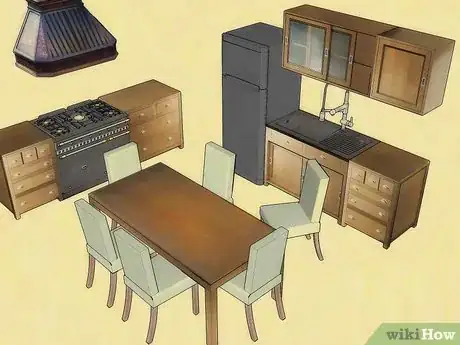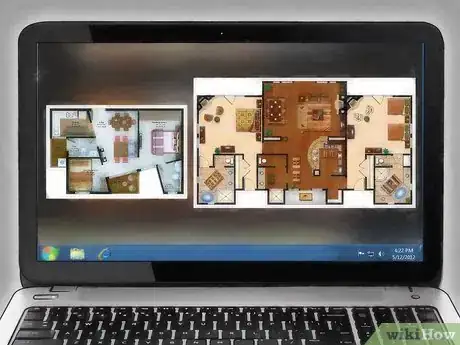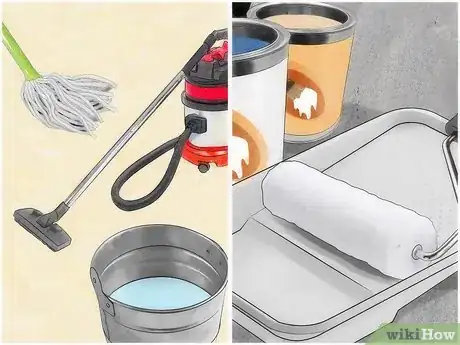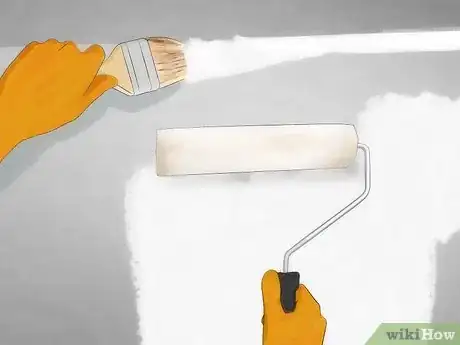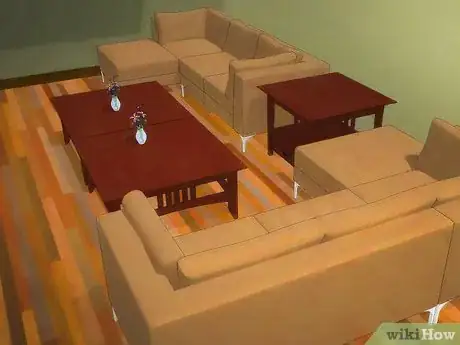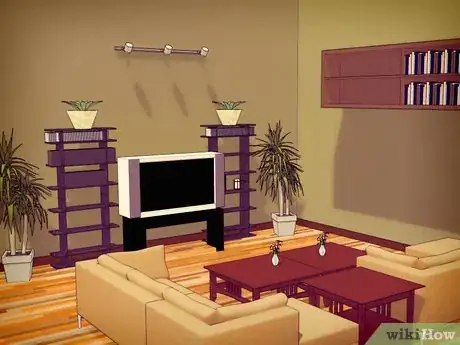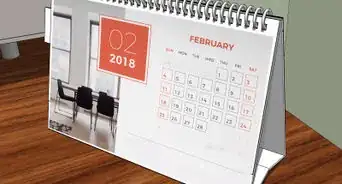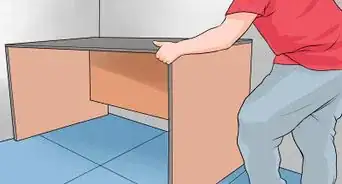This article was co-authored by MacKenzie Cain. MacKenzie Cain is an Interior Designer and a LEED-certified Green Associate for Habitar Design based in Chicago, Illinois. She has over seven years of experience in interior design and architectural design. She received a BA in Interior Design from Purdue University in 2013 and received her LEED Green Associate certification from the Green Building Certification Institute in 2013.
This article has been viewed 108,124 times.
Designing a room can be a fun and creative process, but it can also be time-consuming. For people who have no prior experience in design or who lack a creative eye, it can be downright daunting. To make the process easier, start by figuring out your personal style and what type of ambiance you want the room to convey. Then, find ideas for the particular space you want to design, and create a blueprint of what you want the final product to be. Finally, make your purchases and design your space, knowing it's all yours from start to finish!
Steps
Figuring Out Your Style
-
1Think about your design personality. Everyone is different when it comes to the type of rooms they like best, so prioritize focusing on the room(s) you desire. Some rooms are sparsely decorated with modern furniture and stark white walls; others are richly decorated with plush furniture, heavy fabrics, and dark colors. The key is to find what you love best and want to live in, then find ways to bring that to life in the particular space you are designing. There are many online quizzes you can take to determine your design esthetic; to begin, think about which of these best describes your personality:
- Cozy and rustic: You might have a rustic design personality if you love the countryside and are drawn to natural surfaces like warm wood, rich leather, and stone.[1]
- Modern and urban: You might have a modern esthetic if you love the big city, traveling, and are drawn to bold, crisp lines, geometric shapes, and surfaces like chrome and glass.[2]
- Casual: You might enjoy a casual design approach if you like modern colors and textures, but with clean lines and sparse décor. Casual designs feature natural surfaces, cheery colors, and comfort.[3]
-
2Create an idea board. If you're not sure what your home décor style is or how to begin with room design, you have to start by observing the types of things that you are drawn to. You can use a large cork board, a poster-board, or a virtual board (such as on Pinterest) as a place to organize your inspiration and figure out what unites the different things you like.[4] It's best if you pin the items on the board temporarily (rather than attaching with glue) so that you can remove things as you like.
- Look for things like fabrics, patterns, paint colors, photos of rooms, "mood" images of things that inspire you (like nature photos, pets, cityscapes, children, etc), and pictures of furniture, appliances, or fixtures that you love.
- As you begin to gather ideas, don't worry about price points; you can usually find something in the same style or color at various price points from luxury to bargain.
Advertisement -
3Take advantage of examples. There are many places you can look for professionally-designed and do-it-yourself ideas for whatever space you are designing.[5] Cut out, print, or take photos of the ideas you find that you are drawn to, and pin them on your idea board. Consider looking in the following places:
- Online. You can check out professional designer's websites, do-it-yourself home improvement blogs, or websites associated with television shows (such as HGTV's website). You can also search photo sharing websites like Pinterest or use keywords like "living room modern" or "living room southern."
- Magazines and books. Visit your local bookstore or library to check out magazines and books dedicated to designing, decorating, or even more general lifestyle categories. For example, if you are designing a kitchen, a cooking magazine may have great photos of actual kitchens, cookware, and appliances. If you are designing a living space, lifestyle magazines (such as women's magazines, hunting magazines, or parenting magazines) may have photos that inspire your space as well.
- Showrooms and stores. Do a quick internet search to find furniture stores, design studios, and home boutiques in your town. Then take a trip with your camera at the ready, and get pictures of mock up spaces or particular items that you love. You can also visit big box stores for ideas, especially for particular colors and styles for paint, flooring, fixtures, and appliances.
-
4Think about friends' homes that inspire you. When you visit your friends and family, how do you feel in their homes? Are there homes that seem cluttered with the decor, over the top, or too bold for your style? Are there homes that seem too sparse or minimal for your liking? Figuring out how you feel in actual living spaces can help you figure out which style you want to bring into your own home.
- Is there a home in particular where you feel comfortable, relaxed, and rested? What elements of the living spaces do you like best, and which do you think is less ideal?
- If you have a friend who has a style much like your own, ask him or her to help you as you work on your own room design. Even if all your friend can tell you is where he or she bought the furniture and décor in the room, you will have an advantage as you work on your room.
-
5Think about the psychology of color. When you plan your space, keep in mind that different colors, textures, and layouts can have an impact on the way people feel in your room.[6] Color in particular has strong psychological effects on mood.[7] For example,
- Red is associated with passion, anger, and warmth. It also can be overpowering and cause headaches. It is a great accent color for one wall, or for a couch or other piece of furniture, but some experts suggest that you should not paint an entire room red.[8] More significantly, studies have shown that red can impair performance on cognitive tasks, so it be used cautiously in rooms like an office or study.[9]
- Green is associated with calm, rest, and balance, and is a great color for living rooms and bedrooms. However, too much green might take the energy out of a room, so combine it with a bit of red or orange to counteract its calming effects.[10]
- Blue is known as a calming and intellectual color, but it can also appear cold and uninviting unless you choose a blue with a warm base instead of a cool base (for example, teal or aquamarine instead of true blue).[11]
- Yellow and yellow-green are considered the least pleasant, but green-yellow (that is, more green than yellow) is considered to be an arousing, dominant color.[12]
Planning Your Space
-
1Choose the room you want to design.[13] Whether it’s a bedroom, bathroom, kitchen, or living area, each room has a function and a "target audience," those people who tend to use the room the most. Your design choices need to reflect the target audience as much as possible in order for the room to remain functional.
- The rooms in your house should complement the personality of the person or people who use them most. For example, if your space will be used to host dinner guests or clients, you will want to take a different approach than if it is used as a nursery or playroom. Similarly, if you are the only one who will be using the room, you might feel more free to design it to your own standards and not worry about how others will see it.
-
2Take measurements of the space. Ask someone for help to make sure your measurements are accurate, and write them down as you go. Measure each wall's length and height, as well as any permanent fixtures to the room (like built-in cabinets, fireplace, bathtub, etc).
- Don't forget to measure windows and doorways, including width and height.
-
3Set a budget. Before you can plan your design, you need to know what you have to work with. If you have an unlimited budget, then you can skip this step! Otherwise, think about each part of the room's design, which you are interested in changing, and how much you can afford to spend. This will help you focus your design on those elements you can afford to update. For example, you may not be able to put in a new carpet, but you might be able to buy a throw rug to cover up the carpet and update the look.
- Your budget should be a list that includes general categories and a specific breakdown of how the money will be spent in each category. It will be unique to the room that you are designing, so it will differ depending on if it is a kitchen, living room, bathroom, bedroom, etc. Some aspects to include in your budget might include:
- Walls: Do you need to paint? What about repairing, replacing, or adding features like wood trim, crown mouldings, or paneling? How about wallpaper?
- Windows: Do you need new windows altogether, or can you keep the ones you have? Old windows can be drafty and dated, and hard to clean. But they can be disguised with good window treatments. Do you need new blinds? What about draperies, curtains, valances, or other window treatments?
- Flooring: Do you need to replace the carpeting? Do you want to put down hardwood floors or tiling? Could you just get by with steam cleaning the existing floors and perhaps adding an accept rug or area rug to update the space?
- Fixtures: Does the area have light fixtures or chandeliers that need to be replaced or updated? What about outlet and light switch covers? Does it have a sink, faucet, or bathtub that needs updating? What about countertops, cabinets, or appliances?
- Furniture (couch, chair, table, bookshelf, bed, etc).
- Décor: This includes everything from the pictures on the wall to the throw blanket on the couch. In many cases, you can renovate the appearance of a room by just changing the décor items. Do you want to add photos or canvases to the wall or to shelves? What about figurines, wall hangings, or soft lines like throw pillows or blankets?
- Your budget should be a list that includes general categories and a specific breakdown of how the money will be spent in each category. It will be unique to the room that you are designing, so it will differ depending on if it is a kitchen, living room, bathroom, bedroom, etc. Some aspects to include in your budget might include:
-
4Think about what furniture you want in the room. Think practically first: What furniture do you need in order to use the space? Items like a bed, dresser, or couch might fit this description. Then, consider what furniture items would make the space more user-friendly or fun, like a coffee table, bean bag chair, or accent table.
- As you write down the furniture, make a note of what you currently have and what you might need to buy.
-
5Research online web tools for inspiration for furniture arrangement and color ideas. Using themes and designer tips from professional decorators will help get the creative ideas going.
- Experiment with different furniture arrangement options using free room planning websites. Search online for "interactive room design" to get started.
- You can also use these websites design a virtual room from flooring and paint colors to cabinets and counter tops.
-
6Have supplies and tools ready. Know which cleaning supplies, painting supplies and any tools or equipment are necessary. Have someone ready to help you move any heavy or fragile furniture.
Bringing Your Design Ideas to Life
-
1Start with a clean slate. Room design is different than decorating because it has to do with the whole space, including the parts of it that are permanent like the walls, windows, and floors. When you begin your project, you need to get everything else out of the way so that you can see the bare bones of what you have to work with.
- Begin by moving furniture and every item of décor (including pictures on the walls) out of the room. Keep it in another room if you can, to give you time to finish your project before you decide what to give away or sell.
- Give the space a deep cleaning. Clean the walls, windows, and floors and any permanent fixtures like lights, light switches, cabinets, or baseboards.
-
2Start with the walls. In order to prevent getting paint or adhesive on the new floors, finish the walls before doing any work to replace flooring.
- You may need to remove old wall paper or old wood trim before beginning.
- Prime the walls and paint the walls and trim.
-
3Take care of the flooring. If you plan to replace carpeting, vinyl, tile, or wood floors, you should do it now, but take care to protect your new floors as you move in new furniture.
- Make sure all paint is dry before you begin with the flooring, which can produce a lot of dust that will stick to tacky paint.
- After you finish the flooring, be sure to vacuum or mop the floors before proceeding with the next steps.
-
4Arrange furniture. Start with the focal point of the room or the biggest pieces of furniture. Move on to the smaller pieces and accents.
- Don't be afraid to re-arrange. Sizes and placements might not completely match what you were envisioning the first time.
- Make sure seating arrangements provide the opportunity for conversation and/or unobstructed views of the TV, if applicable.
- Keep walkways clear for a natural flow of the room.
- Determine if rugs or end tables and positioning of seats are needed to section off areas of the room.
-
5Create lighting options. In almost all rooms, different levels of light are needed to create different moods or to light up only a certain section of the room.
- Use dimmers on the main light and place lamps strategically.
- Choose curtains, shades or blinds to control natural sunlight.
-
6Put your finishing touches on the room. Although it might seem like an afterthought, small items of décor and memorabilia are often what gives a room its character and livability. Plan these with care to match the theme and mood of your room and to make it enjoyable for you and your guests.
- Hang pictures and artwork on the walls to complement the furniture placement.
- Place pictures, keepsakes and other decorations on shelves and tabletops.
- Use hideaway storage for blankets, coasters and other items that might need to be used but are not needed at all times.
Expert Q&A
-
QuestionWhat is the easiest way to paint a wall?
 Katherine TlapaKatherine Tlapa is an interior designer, currently working as a Design Specialist for Modsy, a design service based in San Francisco. She also runs her own DIY Home Design blog, My Eclectic Grace. She received her BFA in Interior Architecture from Ohio University in 2016.
Katherine TlapaKatherine Tlapa is an interior designer, currently working as a Design Specialist for Modsy, a design service based in San Francisco. She also runs her own DIY Home Design blog, My Eclectic Grace. She received her BFA in Interior Architecture from Ohio University in 2016.
Interior Designer Repainting a wall can be easy if you take the time to prepare and work carefully. Before you begin painting, wipe down the wall with a gentle cleanser or water and patch up any holes you see. As you paint, use long, even strokes to get a consistent color all along the wall. Some colors might require two or three coats, so don't worry if it doesn't look like what you wanted after the first one.
Repainting a wall can be easy if you take the time to prepare and work carefully. Before you begin painting, wipe down the wall with a gentle cleanser or water and patch up any holes you see. As you paint, use long, even strokes to get a consistent color all along the wall. Some colors might require two or three coats, so don't worry if it doesn't look like what you wanted after the first one. -
QuestionIs it a good idea to make a sketch of the design of a room before decorating or redecorating it?
 Community AnswerOf course it is good to plan out your design.
Community AnswerOf course it is good to plan out your design.
References
- ↑ http://www.raymourflanigan.com/Design-Center/Find-Your-Style.aspx
- ↑ http://www.raymourflanigan.com/Design-Center/Find-Your-Style.aspx
- ↑ http://www.raymourflanigan.com/Design-Center/Find-Your-Style.aspx
- ↑ http://www.creativebloq.com/graphic-design/16-great-tools-creating-mood-boards-91412793
- ↑ MacKenzie Cain. Interior Designer & LEED Green Associate. Expert Interview. 7 April 2020.
- ↑ MacKenzie Cain. Interior Designer & LEED Green Associate. Expert Interview. 7 April 2020.
- ↑ http://psycnet.apa.org/journals/xge/123/4/394/
- ↑ http://www.bbc.co.uk/homes/design/colour_psychologyofcolour.shtml
- ↑ http://psycnet.apa.org/journals/xge/136/1/154/
- ↑ http://www.bbc.co.uk/homes/design/colour_psychologyofcolour.shtml
- ↑ http://www.bbc.co.uk/homes/design/colour_psychologyofcolour.shtml
- ↑ http://psycnet.apa.org/journals/xge/123/4/394/
- ↑ MacKenzie Cain. Interior Designer & LEED Green Associate. Expert Interview. 7 April 2020.
About This Article
To design a room, look online for design ideas that match your style. You can also locate showrooms or design stores online, then visit them in person to check out furniture and room layouts. If a friend has a room design that you like, draw inspiration from their design approach and ask them for advice. Once you've gathered some ideas, create an ideas board so you can evaluate them and decide how the different parts of your design should come together. For tips on how to budget for your design and how to bring your ideas to life, read on!
